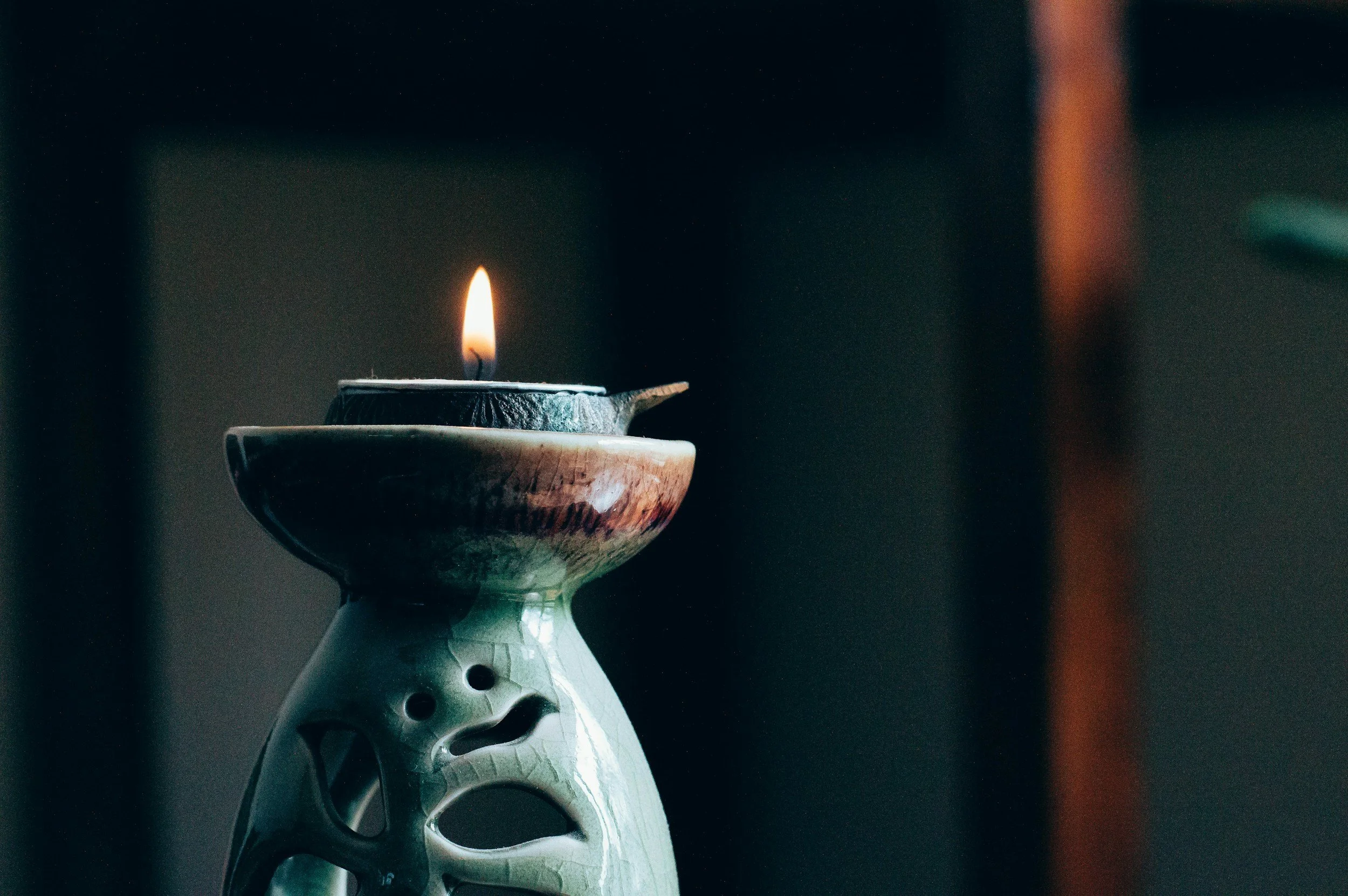How I’m Saving $20K to Move Without Burning Out
Excerpt: A personal roadmap for sensitive high-achievers, trauma survivors, and soulful professionals craving a slower, more sustainable kind of success. Here’s how I’m saving $20K without hustle or burnout.
A Different Kind of Savings Story
This isn’t one of those posts about how I skipped lattes and made six figures by manifesting a yacht. This is a different kind of story.
I’m in the process of saving $20,000 to move—intentionally, not impulsively. The destination? Santa Fe, New Mexico. A place that’s been pulling at me for years with its quiet magic, slower pace, and desert mysticism that somehow feels like a mirror. I’m building my wellness practice there, piece by piece, in a way that aligns with my nervous system—not against it.
But the journey to this point hasn’t been neat or linear.
I’ve lost an apartment. Left jobs that broke me. Lived with an ex out of necessity, not comfort. I’ve had to restart more times than I can count. And somewhere in all of that, I realized: I can’t save money—or build anything real—if I’m stuck in survival mode.
For trauma survivors and sensitive people, money stress isn’t just stress. It’s full-body shutdown. It’s insomnia. Spiraling thoughts. That gut-punch moment when your card declines at the grocery store. Planning for the future is hard when your nervous system still thinks it’s not safe to exhale.
That’s why this savings journey isn’t just financial—it’s spiritual. It’s somatic. It’s about learning to feel safe again. And for me, massage therapy—both giving and receiving—helped bring me back into my body when everything else felt like too much.
Massage isn’t just relaxation. It’s regulation. It’s how I recalibrated after trauma and burnout and began making grounded decisions about money, work, and where I wanted to rebuild my life. It taught me that slowing down isn’t falling behind—it’s how you begin to move forward, on your own terms.
This is how I’m saving $20K without burning out. Not through hustle. Through healing.
From Crisis to Clarity — My Financial Rock Bottom
Losing It All
A couple years ago, I lost everything that made me feel okay. My apartment, my job, my sense of direction—I watched it all slip through my fingers. Slowly at first, then all at once.
The apartment was the hardest. Not because it was fancy—it wasn’t—but because it was mine. Losing it didn’t just mean moving out. It meant my nervous system went into full alarm mode. I had to move in with an ex—not out of choice, but because I had nowhere else to go.
Financial instability while carrying trauma is more than logistical—it’s visceral. Your body keeps the score. The smallest expense feels dangerous. Every rent payment feels like a test you might fail.
Back then, “living lean” wasn’t a minimalist lifestyle. It was survival. Stretching $20 like a yoga pose. Skipping self-care because even $10 felt indulgent. The worst part wasn’t the lack of money—it was the shame. I wasn’t just broke. I believed I was broken.
The Invisible Side of Burnout
Eventually, I couldn’t keep going—not in my body, not in my mind. I stepped away from massage for over a year. Not because I wanted to—but because I had to. My trauma had caught up with me. I couldn’t keep performing wellness for others when I was falling apart inside.
That decision cost me—emotionally, financially, professionally. But I don’t regret it.
Because what I was doing wasn’t sustainable. My body was tired. My spirit was raw. And the kind of healing I needed couldn’t be rushed—it required stillness, softness, and space.
There’s a difference between financial instability and financial insecurity. One is external. The other is internal—the shame that festers when your worth is tied to your income.
Once I started reframing that year as an investment—in my healing, my future, and the kind of practitioner I want to be—something shifted. I stopped seeing that pause as a failure. I started seeing it as part of the foundation.
Sometimes the breakdown is the blueprint.
“Before I could move forward, I had to learn how to be still.”
Healing First, Saving Second — Why Nervous System Health Comes Before Numbers
Massage as My Reset
Before I could save a dime—let alone $20K—I had to regulate my nervous system.
I didn’t grow up knowing what calm felt like. Therapy gave me language, but massage gave me embodiment. Not just in theory—in my breath, my tissues, my bones.
Slow, intentional modalities like myofascial release and cranial sacral therapy helped me relearn safety. They interrupted the fight-or-flight loop I’d been stuck in for years. When someone placed grounded, non-invasive hands on me, my body finally said: We’re not in danger right now.
Small shifts followed—better sleep, fewer panic attacks, less compulsive spending. Eventually, those shifts created space for clarity. And that’s when saving became possible.
Money Doesn’t Flow When You’re Frozen
When we’re in a freeze state, everything shuts down—energy, digestion, decision-making… and yes, even financial flow. According to polyvagal theory, our ability to plan and problem-solve is directly linked to how safe we feel in our bodies.
That’s why no budgeting tool worked until I addressed what was happening somatically. I couldn’t make grounded choices because I didn’t feel grounded.
The shift happened when I stopped forcing action and started building safety—through breath, bodywork, and slowness.
I stopped asking, “How do I save more money?”
And started asking, “What makes my body feel safe enough to trust there will be enough?”
That question changed everything.
💭 Want to know more about how I work with the body during this kind of healing? I offer trauma-informed massage and energy sessions that support regulation at a nervous system level—not just surface-level stress relief.
Saving $20K—Without the Hustle or the Shame
My No-Burnout Budget Philosophy
Let me be clear: I’m not hustling my way to this goal.
My approach to saving is simple but not conventional:
I don’t shame myself for small pleasures.
I don’t compare my pace to anyone else’s.
I refuse to treat money like a badge of worth.
Instead, I budget in ways that feel nourishing—not punishing.
Some examples:
I meal prep not for trends, but for grounding—and savings.
I cancel subscriptions out of clarity, not scarcity.
I shop secondhand and DIY, so I can still afford the occasional massage or energy tool.
There’s room for joy in a minimalist lifestyle. The point is to feel resourced, not restricted.
How I Actually Save
I’m currently saving about $2,000/month. Here's how:
Massage income (franchise + Zeel): steady, reliable. I budget based on the lowest-earning week.
Tax refund: went straight to savings.
Part-time hours, full-time mindset: I track energy and spending like a business owner.
Frugal living: Staying with my ex (for now), no car payment, rare takeout, low overhead.
But here’s the key difference: I’m saving from peace, not panic.
And maybe that’s the most radical part—moving toward something new without burning out everything along the way.
The Energetic Side of Money
Money has energy. That’s not woo—it’s nervous system logic.
When I save from desperation, I tighten. My thoughts race. I feel like I’m chasing something that’s always out of reach.
But when I save from calm intention, it feels like alignment. Like I’m planting something that will grow.
Every dollar I save is a vote for the version of me I’m becoming:
Rooted. Regulated. Ready.
“Safety isn’t something you wait for—it’s something you build, one quiet ritual at a time.”
Financial Recovery as a Spiritual Practice
Building Safety, Slowly
I used to think “getting it together” meant booking more clients and staying productive. But safety isn’t something you perform—it’s something you build, slowly and quietly.
Once I stopped chasing stability and started practicing it—through habits, rituals, and non-reactive choices—my relationship with money shifted.
This is slow money. Nervous-system money. It doesn’t look like hustle culture, but it’s the only thing that’s ever worked for me.
Emotional Sobriety Around Money
I’ve had to cultivate emotional sobriety around spending. I don’t mean perfection. I still get tempted. But I’ve stopped using money as a way to bypass hard feelings or prove my worth.
Now, I ask: Is this decision coming from fear—or from trust?
That question anchors me. Again and again.
Why This Matters for My Clients Too
The people I work with are often in this space, too. Rebuilding. Regulating. Reconnecting to their bodies after years of disconnect. They’re not looking for surface-level self-care. They want depth, safety, attunement.
So I don’t hide this part of my story.
I am the work I offer.
📖 If you’re new to my work, feel free to learn more about me and my mission to see why this story isn’t separate from my practice—it’s the reason for it.
This move isn’t just logistical. It’s ceremonial. It’s me stepping deeper into the life I’ve been quietly creating all along.
Growth Isn’t a Race—It’s a Return
I used to think getting ahead meant moving fast. Now I know it means moving with intention.
Saving this $20K isn’t about proving anything. It’s about arriving—in my body, in my life—with enough steadiness to begin again.
Sometimes growth looks like stillness. Sometimes it looks like saying no to what drains you. Sometimes it looks like trusting that nervous system care is financial planning.
That’s the energy I’m carrying into this next chapter.
If you’re rebuilding, regulating, or just trying to feel safe in your own skin again—
I see you. I’ve been there.
💫 Want to work together?
If you’re craving bodywork that supports your whole self—nervous system, spirit, and story—book a session here. I offer trauma-informed massage and energy work that meets you where you are. Gently. Intentionally. With care.
Please note that at the time of this post, I am currently residing in Phoenix and taking limited appointments. I’ll be moving Veluna Wellness to the Santa Fe, NM area by the end of the summer.
🌀 Not sure what to expect? You can read through my FAQs for what sessions are like, how to prepare, and what makes my approach different.



